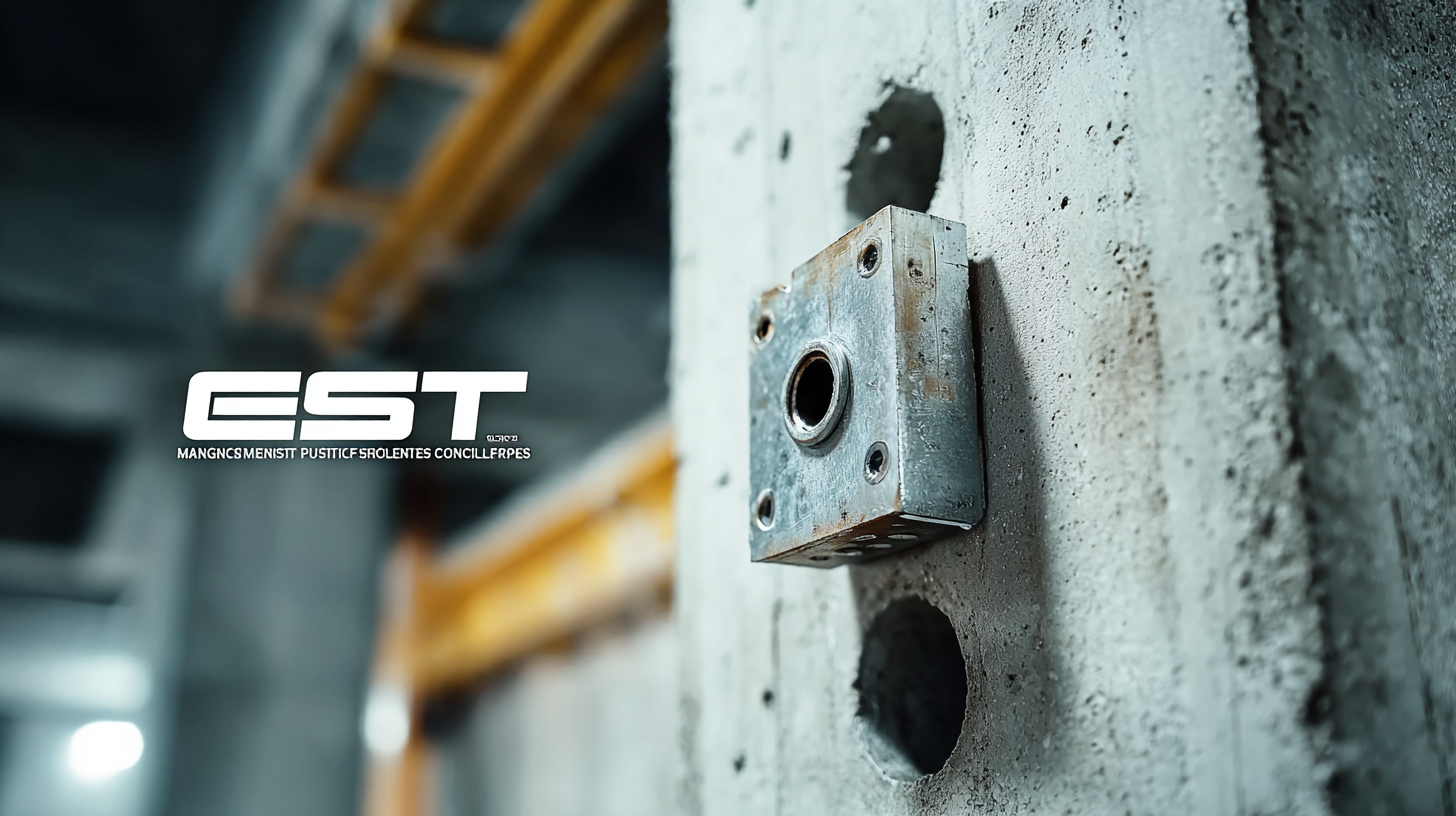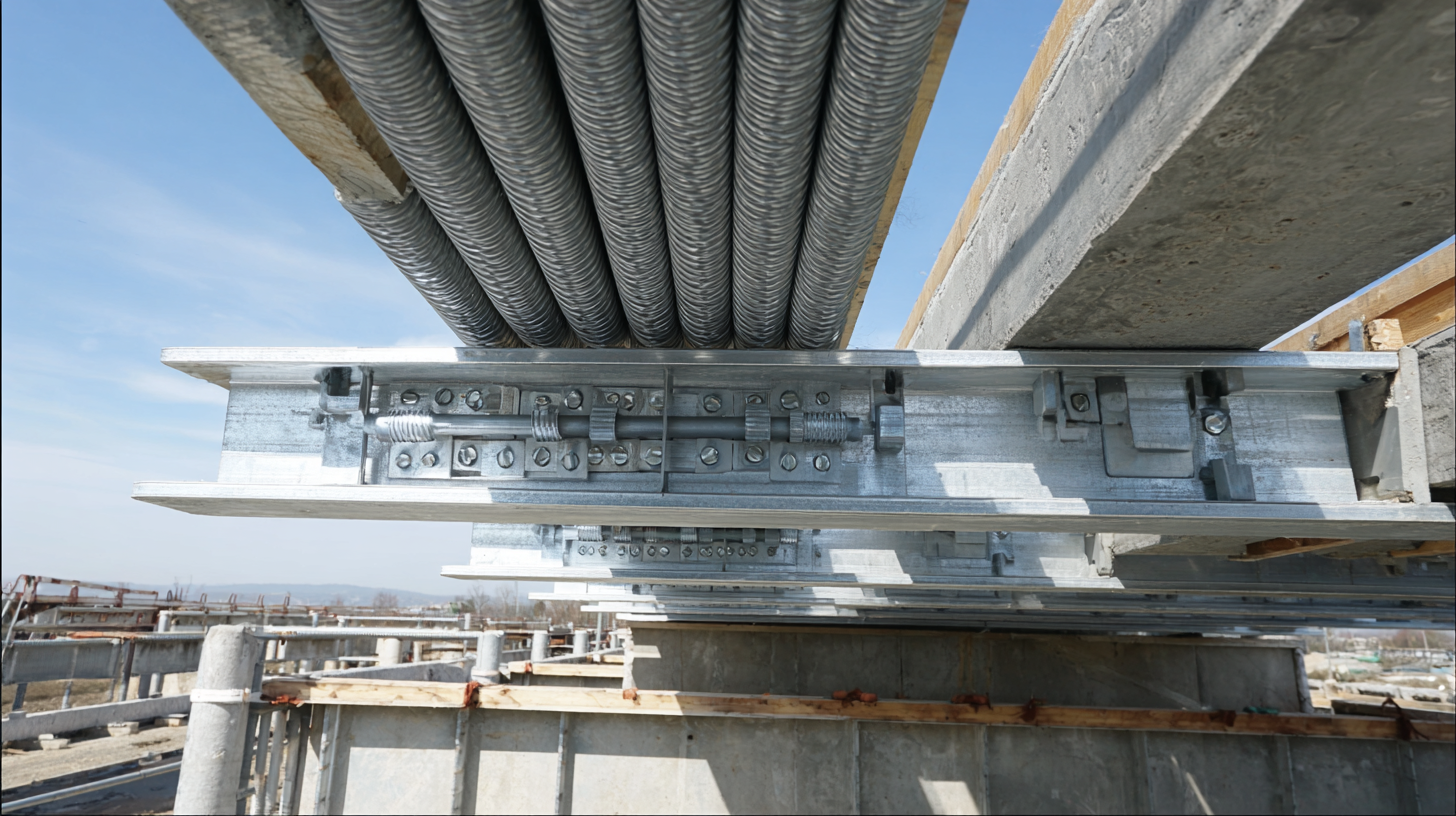In the rapidly evolving construction industry, the demand for innovative solutions has never been greater, particularly in the realm of precast concrete. As infrastructure projects become increasingly complex, the significance of efficient and reliable assembly techniques has surged. Among these innovations, Magnetic Fixing Solutions for Precast Concrete stand out as game-changers, promising enhanced efficiency and precision in construction. According to a recent industry report, the global precast concrete market is projected to reach USD 140 billion by 2027, growing at a CAGR of 5.5% from 2020 to 2027. This growth is fueled not only by urbanization and infrastructure development but also by the need for sustainable construction practices, where magnetic fixing methods can contribute significantly to waste reduction and project timelines. As the Chinese manufacturing sector continues to upgrade its quality standards, the introduction of advanced Magnetic Fixing Solutions for Precast Concrete is set to revolutionize project implementation on a global scale.

Magnetic fixing solutions are rapidly emerging as a game changer in the infrastructure sector, particularly for precast concrete applications. These innovative systems allow for quicker and more efficient assembly of precast components, significantly reducing construction timelines and increasing overall project efficiency. As infrastructure demands grow, the need for solutions that streamline processes and enhance structural integrity becomes paramount. Magnetic fixings facilitate this by ensuring precise alignment and secure attachment without the need for cumbersome additional fixtures.
The versatility of magnetic fixing technology is not only advantageous in terms of speed but also in its ability to adapt to the varying challenges of diverse construction projects. Similar to the way new regulations in sports are proposed to tackle systemic issues, the introduction of magnetic fixing solutions addresses longstanding inefficiencies in infrastructure development. With their ability to enhance safety and improve workflow, these fixes are paving the way for a new standard in construction practices. As the industry continues to embrace such innovations, the potential for transformative impacts on project delivery and performance becomes increasingly apparent.
| Feature | Description | Advantage | Application Area |
|---|---|---|---|
| Holding Force | The strength of the magnetic fixing system used to secure precast elements. | Ensures safety and stability in construction. | Roads, Bridges, and Buildings |
| Installation Speed | Rapid setup and placement of concrete elements. | Reduces labor costs and construction time. | High-rise Buildings and Infrastructure |
| Versatility | Can be adapted to various sizes and shapes of precast elements. | Supports creative architectural designs. | Architectural Projects and Custom Designs |
| Reusability | Magnetic fixings can be reused across multiple projects. | Cost-effective and environmentally friendly. | Temporary Structures and Events |
| Safety Features | Incorporates features such as fail-safe mechanisms. | Enhances worker safety during installations. | Construction Sites and Hazardous Areas |
 Magnetic fixing solutions in infrastructure projects have revolutionized the way precast concrete components are manipulated and installed. One of the standout benefits of these systems is their efficiency. Traditional fixing methods often require extensive labor and time-consuming setups, leading to delays and increased costs. In contrast, magnetic fixings provide a quick and adaptable solution that enhances workflow on construction sites. The ability to easily reposition and secure precast elements significantly reduces installation time, enabling projects to stay on schedule and within budget.
Magnetic fixing solutions in infrastructure projects have revolutionized the way precast concrete components are manipulated and installed. One of the standout benefits of these systems is their efficiency. Traditional fixing methods often require extensive labor and time-consuming setups, leading to delays and increased costs. In contrast, magnetic fixings provide a quick and adaptable solution that enhances workflow on construction sites. The ability to easily reposition and secure precast elements significantly reduces installation time, enabling projects to stay on schedule and within budget.
In addition to efficiency, precision is another key advantage of magnetic fixings. Accuracy in placement is critical in infrastructure projects, as even minor misalignments can lead to significant structural issues and safety concerns. Magnetic systems allow for exact positioning, ensuring that each piece fits perfectly with others, thereby improving the overall quality of the construction. This precision not only contributes to the longevity and durability of the structures but also minimizes the need for costly adjustments or repairs later in the project lifecycle. With these compelling benefits, magnetic fixing solutions are swiftly becoming the preferred choice in modern infrastructure development.
In the realm of infrastructure projects, the choice between magnetic fixings and traditional fastening methods can significantly impact both budget and efficiency. Magnetic fixings offer a swift and clean installation process, eliminating the need for drilling and the disruption typical of traditional methods. This innovation not only speeds up construction timelines but can also reduce labor costs. By investing in magnetic solutions, project managers can achieve a balance between quality and affordability.
**Tip:** When considering fixation methods, evaluate the long-term costs associated with maintenance and repairs. Magnetic fixings generally require less upkeep compared to traditional methods, which may corrode or deteriorate over time, ultimately leading to higher costs.
Additionally, magnetic fixings can provide greater flexibility in design and reusability, allowing for modifications without significant structural alterations. This adaptability makes them an ideal choice for dynamic infrastructure projects where changes might be necessary.
**Tip:** Always consult with your engineering team about the specific requirements of your project. Understanding load capacities and environmental factors will ensure that you make an informed decision, maximizing both safety and cost-effectiveness.

In recent years, the integration of
magnetic fixing solutions
in precast concrete has revolutionized infrastructure projects, showcasing remarkable efficiency and effectiveness. One highlighted case study is the implementation of magnetic fixing in the construction of a major highway bridge. Traditional methods often resulted in prolonged assembly times and safety concerns due to the weight of the precast components. By utilizing magnetic fixing, the project team was able to streamline the installation process, achieving a 30% reduction in assembly time while also ensuring a secure and stable connection.
Another compelling example comes from a large urban development project where magnetic fixing was employed for the installation of precast concrete facades. This innovative approach not only expedited installation but also minimized the environmental impact typically associated with traditional anchoring methods. The ease of adjustment provided by magnetic systems allowed for real-time modifications during installation, which proved invaluable in adapting to design changes. These case studies highlight the transformative potential of magnetic fixing solutions, making them an ideal choice for modern infrastructure projects aiming for efficiency, safety, and sustainability.
In recent years, the demand for durable infrastructure solutions has driven innovations in magnetic fixing technologies. These advancements are revolutionizing the way precast concrete elements are integrated into construction projects. By utilizing powerful magnetic systems, engineers can enhance the efficiency of assembly processes, reduce labor costs, and improve overall structural integrity. For instance, modern magnetic attachments allow for quick adjustments during installation, providing significant flexibility and reducing downtime on projects.
Emerging trends in this field include the development of smart magnetic fixing systems equipped with sensors and IoT connectivity. These technologies enable real-time monitoring of structural performance, alerting engineers to potential issues before they become critical. Additionally, advancements in material science have led to the creation of stronger and more resilient magnetic materials, which can withstand extreme environmental conditions, further extending the lifespan of infrastructure. As the industry moves towards greater sustainability and efficiency, magnetic fixing solutions are poised to play a pivotal role in the future of construction.
